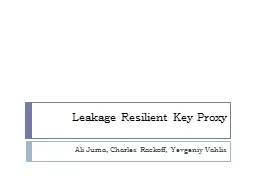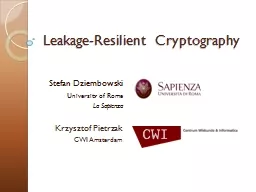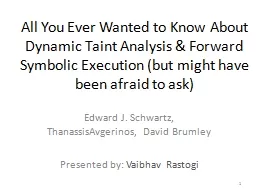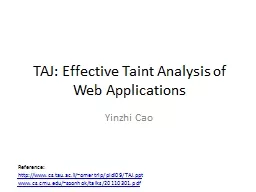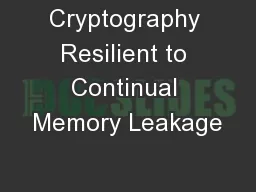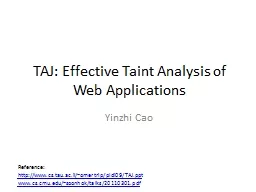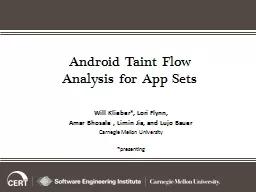PPT-The “Taint” Leakage Model
Author : pamella-moone | Published Date : 2017-06-24
Ron Rivest Crypto in the Clouds Workshop MIT Rump Session Talk August 4 2008 Taint Common term in software security Any external input is tainted A computation
Presentation Embed Code
Download Presentation
Download Presentation The PPT/PDF document "The “Taint” Leakage Model" is the property of its rightful owner. Permission is granted to download and print the materials on this website for personal, non-commercial use only, and to display it on your personal computer provided you do not modify the materials and that you retain all copyright notices contained in the materials. By downloading content from our website, you accept the terms of this agreement.
The “Taint” Leakage Model: Transcript
Download Rules Of Document
"The “Taint” Leakage Model"The content belongs to its owner. You may download and print it for personal use, without modification, and keep all copyright notices. By downloading, you agree to these terms.
Related Documents



